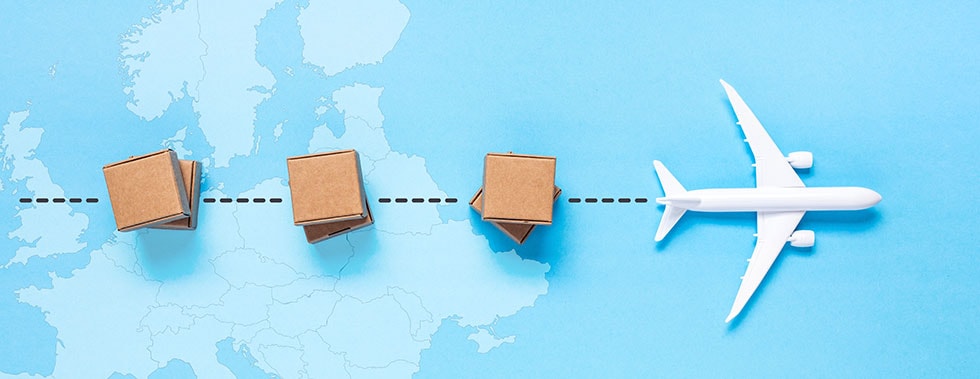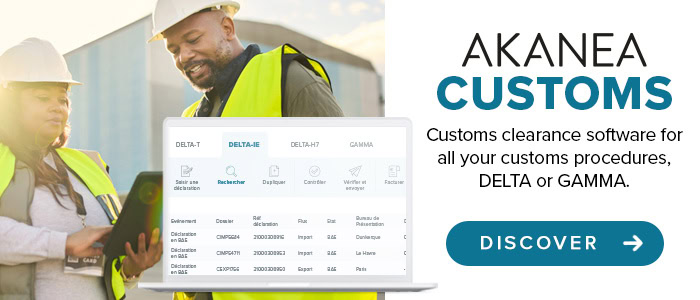
Customs procedures, by establishing a legal framework for goods with respect to customs authorities, play a vital role in a company’s operations by offering various advantages. However, these concepts may appear complex and can present real challenges for companies. To maximise their efficiency and fully reap the benefits, it is essential that you know how to master them.
Here are five tips to help you!
What is a customs procedure?
A customs procedure refers to the legal status assigned to goods during their movement, following customs clearance.
This status determines:
- Whether duties and taxes are paid in full, partially, or are exempted,
- Whether external trade controls are applicable.
The customs procedure thus represents the framework within which goods are placed in relation to customs authorities and is specified in the customs declaration.
What are the main customs procedures and their benefits?
There is a wide variety of customs procedures, more or less suited to different international transport scenarios. The tables below outline the key procedures and their respective advantages.
Les régimes de base :
| Procedure | Scenario | Obligations |
|---|---|---|
| Importation | Arrival of goods in the EU for commercial purposes. |
|
| Exportation | Permanent export of goods outside the EU. | VAT exemption. |
Suspensive procedures:
| Procedure | Scénario | Obligations |
|---|---|---|
| Community Transit T1 | Transit of goods from a third country to a customs office for clearance. | Suspension of applicable duties and taxes until arrival at destination. |
| International Road Transit (TIR) | Transit of goods by lorry to reduce formalities in transit countries. | Inspections limited to departure and arrival countries. |
Special procedures (also known as economic procedures):
These allow EU-based companies to import non-EU goods under duty and VAT suspension, for storage, use, or processing, before re-exporting them within the EU or to third countries.
| Procedure | Scénario | Obligations | Benefits |
|---|---|---|---|
| Customs Warehouse | Storage of imported goods in bonded warehouses until removal or use. | Suspension of duties and taxes until goods exit (unlimited duration). | Improved cash flow management. |
| Inward Processing | Import of goods for processing and re-export. | Exemption from customs duties and VAT. | Enhances competitiveness by reducing processing costs. |
| Outward Processing | Export of goods for processing and re-import. | Full or partial exemption from import duties. | Cost-effective production and transformation. |
| Temporary Admission | Temporary import (under 24 months) for specific use. | • Full or partial duty exemption, • Tax suspension. |
Simplifies procedures, reduces costs. |
| End-use Procedure | Goods benefiting from tariff preferences assigned to a specific use. | Duty reduction or suspension for the importer. | Cost reduction and increased competitiveness. |
Note: The list above includes the most commonly used procedures in France but is not exhaustive.
How to choose the right customs procedure for transporting goods?
To select the most appropriate customs procedure for your needs, several factors regarding your business and goods must be taken into account:
- The nature of the goods (finished products, raw materials, components, etc.),
- Destination: each country may have specific regulatory requirements,
- Shipment volume and frequency,
- Commercial objectives (cost reduction, simplification, stock management optimisation, etc.),
- The financial and operational risks your company can absorb.
5 Tips to Better Manage Customs Procedures
Choosing the right customs procedure for international transport can be crucial for your business. As previously outlined, using the appropriate procedure can reduce costs, improve cash flow management, and increase competitiveness on a global scale.
Here are five tips to help you manage customs procedures effectively:
1. Analyse all available options
To make the right choice, you need to familiarise yourself with all existing procedures —their mechanisms, constraints, and advantages. This knowledge, combined with the questions listed above, will give you a comprehensive view of your options.
2. Work with customs experts
Are customs terms still a mystery to you? Professionals such as customs brokers, specialist advisors, or freight forwarders can guide you and help you make the right decisions.
Their expertise ensures full compliance with regulations and guarantees that you benefit from the full range of advantages offered by specific customs procedures.
3. Correctly classify your goods
Accurate classification of your goods according to the Harmonised System (HS Code) is essential for understanding the options available to you.
To ensure proper classification, you can use tools such as our Akanea CUSTOMS solution, a keyword-based search tool, or our “Intelligent Classification” feature, which uses AI to automate the search for customs codes.
4. Conduct internal audits and ensure proper documentation
To streamline customs formalities, you must be compliant with all required documents (commercial invoices, customs declarations, certificates of origin, etc.). All records linked to customs procedures must be securely stored.
Training your employees and defining clear internal processes will minimise the risk of non-compliance and unexpected costs.
5. Automate your customs processes
Using customs management software is essential for international trade operations.
Akanea CUSTOMS is a comprehensive solution that automates your customs procedures: from entering shipment data to generating and storing all necessary documents, as well as verifying declarations. You can monitor operations in real-time and ensure full compliance.
As a business active in the global market, it is vital that you manage your supply chain end-to-end, including customs formalities. A deeper understanding and better management of customs procedures enhance your competitiveness and deliver substantial benefits.
You should therefore evaluate your options, invest in automation tools, and remain vigilant regarding evolving regulations. This will help you boost your operational efficiency.


